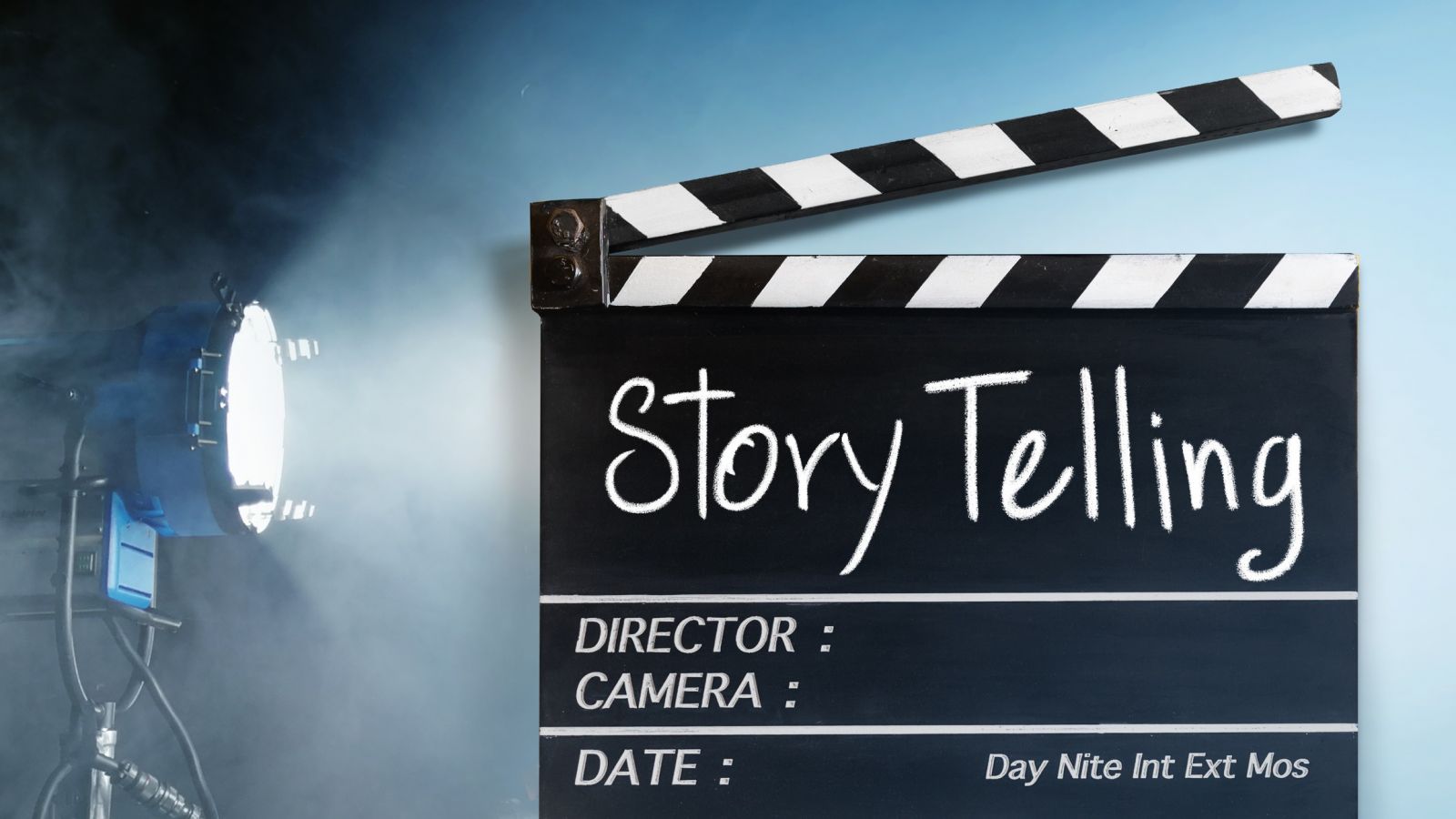On 01/25/2021, article by Bronwyn Fryer published on Harvard Business Review France.
Persuasion is central to any business activity. You must convince your customers to buy your company’s products or services, your staff and colleagues to follow a new strategic plan or a reorganization, investors to buy (or not to sell) your stock market and your partners to sign the next contract. But despite the fundamental importance of persuasion, most executives struggle to communicate well, let alone motivate. They are too often satisfied with the usual panoply of corporate language: PowerPoint slides, terse memos and bombastic missives from the internal communications department. Even carefully crafted messages often meet recipients’ cynicism and weariness, if not outright rejection. Why is it so hard to persuade people and how do you galvanize their energy? In an attempt to answer these questions, Harvard Business Review senior editor Bronwyn Fryer visited his home in Los Angeles with world-renowned screenwriting teacher Robert McKee. An award-winning screenwriter and director, he moved to California after earning his PhD in film arts from the University of Michigan. He taught at the University of Southern California’s School of Film and Television before founding his own company, Two Arts, to present his lectures on the art of storytelling to an audience of writers around the world. , directors, producers, actors and entertainment executives.
Former students of Robert McKee have written, directed and produced hundreds of hit films, including “Forrest Gump”, “Erin Brockovich”, “The Color Crimson”, “Gandhi”, “Monty Python: Holy Grail!” “, “Sleepless in Seattle”, “Toy Story” and “Nixon”. Together they have won 18 Academy Awards, 109 Emmy Awards, 19 Writers Guild Awards and 16 Directors Guild of America Awards. Brian Cox, also awarded an Emmy Award, played Robert McKee on screen in 2002 in the film “Adaptation” (released in France in 2003, editor’s note), which traces the life of a screenwriter trying to adapt to the cinema the book “The Orchid Thief”. Robert McKee also consults with film and TV production companies such as Disney, Pixar, and Paramount, as well as major corporations (including Microsoft) who regularly send all of their creative teams to attend his conferences.

Robert McKee believes that by putting aside their PowerPoint slides and instead learning to tell great stories, executives can achieve an unprecedented level of engagement in their audience. In a book acclaimed by readers, “Story: writing a script for cinema and television” (published by Armand Colin in 2017), he explains that stories respond to a deeply rooted human need to understand the vicissitudes of life, not only on an intellectual level, but also as a very personal emotional experience.
WHY SHOULD CEOS OR EXECUTIVES LISTEN TO THE ADVICE OF A SCREENWRITER?
Robert McKee: The role of a CEO is largely to motivate different people to achieve certain goals. To do this, he or she must arouse emotions in his interlocutors, and telling a story is the best way to achieve this. There are two main methods of persuasion. The first is through the usual rhetoric, which most executives are trained in. It’s an intellectual process, and in business it’s usually a PowerPoint presentation where you explain, “Here’s the biggest challenge in business and here’s what we need to do to increase our profits. And then you develop your argument using statistics and facts and quotes that stand out. This approach has two problems. First, the people you are talking to have their own references, their own statistics and their own experiences. While you try to convince them, they oppose you, in their head, contrary arguments. Second, even if you manage to convince them, you will only have done so on a purely intellectual level. This is not enough, because reason alone does not encourage action.
The other method of persuasion – which is ultimately much more effective – is to associate an emotion with an idea. The best way to do this is to tell a compelling story. You then insert a lot of information into the story while creating emotion and mobilizing the energy of the people listening to you. But it is difficult to convince by telling a story. With a little intelligence, anyone can make lists. Constructing an argument through the usual rhetoric requires some rationality but little creativity. But to present an idea with such emotional force that it becomes memorable, you have to be discerning and know the techniques of storytelling. If you manage to mobilize your imagination while applying the principles of a well-told story, then your audience will rise to applaud you instead of yawning thinking of something else.
WHAT IS A STORY?
In its simplest form, a story describes how and why life changes. It starts with a situation in which there is a relative balance: you are going to work every day, every week, and everything is fine. You think it will continue like this. But something comes to turn your life upside down – in the jargon of the screenwriters, we speak of an “inciting incident”: you accept a new job, your boss dies of a heart attack or an important client threatens to leave you. The story then tells how, in trying to restore balance, the protagonist sees his subjective expectations collide with objective and hostile reality. A talented storyteller describes how the protagonist feels about these opposing forces and leads them to redouble their efforts with few means, make difficult decisions and ultimately discover the truth. Since the dawn of time, all the great storytellers – from the ancient Greeks to Shakespeare and up to the present day – have dealt with this fundamental conflict between subjective expectations and unforgiving reality.
HOW CAN EXECUTIVES LEARN TO TELL A STORY?
You have been told stories thousands of times since you climbed on your mother’s lap as a child. You have read good books, seen movies, attended plays. Moreover, human beings are naturally inclined to make the different stages of a story follow one another. Cognitive psychologists explain how our mind, in seeking to understand and remember, brings together various fragments of experience into a story, starting from a personal desire, a life goal, and describing the difficulty of overcoming forces that this desire collides with. We remember stories; but we tend to forget lists and enumerations.
Executives not only have to understand their company’s past, they also have to anticipate its future. And how to imagine this future? In the form of a story. You create scenarios in your head of what might happen in the future to try to plan the life of your business or your own life. Once an executive realizes that they have a natural tendency to present their experience in the form of a story, the best way to move an audience is not to resist this tendency, but to give in to it by telling a beautiful story.
WHAT ARE THE INGREDIENTS OF A GOOD STORY?
It is essential to avoid describing, from start to finish, how the results met expectations. It would be banal and pointless. On the contrary, it is necessary to highlight the tension that exists between expectations and reality in all its adversity.
Imagine, for example, the case of a biotechnology start-up, which we will call Chemcorp, whose CEO must convince Wall Street bankers to invest. He could explain to them that Chemcorp has discovered a chemical compound that prevents heart attacks and show them a lot of slides on market size, business plan, organizational chart, etc. Bankers would nod politely and suppress their yawns at the thought of all the other companies better positioned in the market than Chemcorp.
Alternatively, the CEO could present his case in the form of a story, starting with a member of his entourage – say, his father – who died of a heart attack. Nature is then the first adverse force that the CEO must overcome in his role as protagonist. The rest of the story could go like this: in his grief, he realizes that if there had been a chemical indicator of coronary heart disease, his father would still be alive. His company discovers a protein present in the blood just before a heart attack and develops an inexpensive and easy-to-administer test.
But a new adversary enters the scene: the FDA (the US Food and Drug Administration, editor’s note). The marketing authorization procedure is strewn with risks and pitfalls. The FDA rejects the first request, but new studies show that the reliability of the test exceeds all expectations. The second request is therefore approved. But Chemcorp is then short of cash and a key partner withdraws to found his own company. Engaged in the patent race, the company is fighting a merciless battle.
This succession of adversaries creates excellent suspense. The protagonist suggested to his interlocutors that the story could end badly. At this stage, he keeps them in suspense and can conclude by saying: “We have won the race, we have obtained the patent, we are on the verge of going public and saving a quarter of a million lives a year. And the bankers then granted him all the financing requested.
ISN’T IT MOSTLY ABOUT EXAGGERATION AND MANIPULATION?
No. Although the business community is often wary of narrative devices for the reasons you mention, the reality is that statistics can be used to present huge lies and accounting reports are often just very elegantly presented spiel, as in witness the financial scandals of Enron and of Worldcom.
When executives ask me to help them turn their presentation into a narrative, I start by asking them a few questions. I start to psychoanalyze their company and all sorts of exciting dramas come to light. But most companies and executives pretend they don’t have dirty laundry, difficulties, adversaries and painful battles to fight. They prefer to present to the outside world an embellished – and uninteresting – view of reality. But when you tell a story, you have to put the problems first and then show how you overcame them. When you tell the story of the difficulties you have encountered against real opponents, your audience sees you as an interesting and dynamic person. And I know these storytelling devices work, because after advising dozens of companies whose executives presented compelling stories to Wall Street, they all got the funding they wanted.
WHY NOT PRESENT A POSITIVE VIEW OF REALITY?
This rings false. You can send out a press release about sales progress and your bright future prospects, but your audience knows it’s never that easy. He knows you’re not perfect; he knows that your competitor does not have all the faults. He knows your message is biased to present your business in the best light. Positive forecasts and boilerplate press releases backfire because they arouse distrust in the very people you are trying to convince. I suspect most CEOs don’t believe their own communications advisers – if they don’t believe all that hyperbole themselves, why should the public believe it?
The supreme irony of existence is that it is not the positive aspects of life that interest it. We would all rather be sweet, indolent dreamers, but life doesn’t let us. The energy to live comes from the darker sides of existence. It comes from everything that makes us suffer. Fighting against these negative forces forces us to live more intensely, more fully.
DOES RECOGNIZING THE EXISTENCE OF THESE DARK SIDES MAKE YOU MORE CONVINCING THEN?
Of course. Because you are closer to the truth. To tell a story well, it is essential to understand that we all live in apprehension. Fear arises when you don’t know what is going to happen. Apprehension exists when you know what is going to happen and there is nothing you can do to escape it. Death is the greatest source of apprehension; we all live on borrowed time, and between the present moment and the fateful moment, all sorts of unpleasant things can happen.
Most of us repress this apprehension. We eliminate it by inflicting it on other people through sarcasm, cheating, abuse, indifference – small and large cruelties. We are all guilty of those little naughtiness that ease the pressure and help us feel better. We then rationalize our misbehavior and convince ourselves that we are good people. Institutions do the same thing: they deny the existence of negative aspects while making other institutions or their staff pay the price for their apprehension.
If you are realistic, you know that human nature is such; you actually understand that this behavior is at the core of all nature. In nature, it is imperative to follow the golden rule of survival: do to others as they do to you. If you’re cooperative and you get cooperation in return, you’re fine. But if your cooperation only arouses hostility, then you also behave in a hostile way – and very hostile indeed.
Since human beings began to gather around the fire in caves, we tell stories to help us face our apprehension of life and our difficulty in surviving. All good stories highlight the dark side of things. I am not talking about what is generally called “pure” evil, because that does not exist. We all have a part of evil and a part of good in us and these two sides are constantly at war with each other. Kenneth Lay (CEO of Enron at the time of the Texan group’s financial scandal, editor’s note) declared that he had no intention of depriving people of employment and destroying their life savings. Serial killer Hannibal Lecter is funny, charming and brilliant, and he eats people’s livers. The public appreciates the authenticity of a storyteller who does not ignore the dark side of human beings and presents adverse events frankly. The story then arouses in those who listen to it a positive, but realistic energy.
DOES THAT MEAN WE HAVE TO BE PESSIMISTIC?
It’s not about being optimistic or pessimistic. It seems to me that every civilized human being is skeptical – he doesn’t trust appearances. Skepticism is another principle of storytelling. The skeptic perceives the difference between the text and the subtext and always seeks to know what is really going on. The skeptic flushes out the underlying truth; he knows that the true thoughts and feelings of institutions or individuals are unconscious and unspoken. The skeptic always looks at what appearances mask. For example, the young people hanging around in the streets with their tattoos, piercings, chains and leather clothes look dreadful, but the skeptic knows that this is only a facade. When we try at all costs to give the impression of being fierce, we are in fact very gentle by nature. The real “tough guys” make no effort to appear so.
A STORY THAT ACCEPTS THE DARK SIDES OF EXISTENCE THEREFORE AROUSES POSITIVE ENERGY IN THOSE WHO LISTEN TO IT?
Absolutely. We follow those we believe. The best leaders I’ve known – among producers and directors – accept the grim reality as it is. Instead of relying on communications advisers to sweeten the deal, they help their cast and crew cope with the hostility of a world in which the likelihood of successfully making a film, distributing it, and sell to millions of viewers is 1 in 1,000. They appreciate that their team members love the work they do and live for the small victories that contribute to the ultimate victory.
CEOs also have to chair meetings or speak to audiences and lead their business through the pitfalls of economic conditions or cut-throat competition. If you look your audience straight in the eye, laying out the huge hurdles to overcome and announcing, “If we can get through this, we’ll have incredible luck. But for that, this is what, in my opinion, we should do”, he will listen to you.

To rally the troops to your cause, you can tell an authentic story. General Electric’s history is excellent and has nothing to do with the cult of fame that surrounded Jack Welch. If you see life as a whole, you can see it in all its complexity and celebrate it in a story. A great CEO is someone who has accepted their own mortality and derived compassion for others from it. This compassion is expressed in stories.
Consider, for example, the love of a job well done. When I was a graduate student, I had, alongside my studies, a job as an investigator of insurance fraud. A claim for compensation had been filed by an immigrant who suffered a serious head injury while working on the assembly line of a car manufacturer. He had been the fastest worker on the line and took great pride in his work. When I met him, he was waiting to have an operation to have a titanium plate placed in his skull.
Although this man was seriously injured, his employer believed that he was trying to defraud. However, this had in no way dented his professional dedication. All he wanted was to start working again. He was aware of the value of his work, no matter how repetitive. He was proud of it and was even proud of the company that had wrongly accused him. It would have been wonderful if the CEO of this automaker could recount how his managers backtracked on their accusation and then rewarded this worker for his dedication. The company would then have benefited, in return, from an increased effort on the part of all the employees who would have heard this story.
HOW DO YOU FIND THE STORIES WORTH TELLING?
It is by asking certain key questions that we highlight a story. First, what does the protagonist want to achieve in order to restore balance in his life? Desire is what brings the story to life. This is not a list of chores to be done, but a basic need that, if satisfied, would bring the story to an abrupt end. Then, what prevents the protagonist from realizing his desire? Inner forces? The doubt ? The fear ? The confusion ? Interpersonal conflicts with friends, family, or a lover? Social conflicts present in various institutions of society? Physical fights? The forces of nature? Killer diseases in the air? Lack of time ? That damn car that won’t start? Adversity can come from other people, from society, from the weather, from the surrounding places and from any object in it, or from the conjunction of several of these forces. Under these conditions, what does the protagonist decide to do to achieve his desire in the face of these adverse factors? It is in the answer to this question that storytellers bring out the truth of their characters, for the true personality of a human being is revealed in the choices they make under pressure. Finally, the storyteller must take a step back from the sequence of events he has created and ask himself: “Can I believe this? Is this an exaggeration or a watering down of a difficult situation? Is the story true, whatever the consequences? »
DOES KNOWING HOW TO TELL A STORY MAKE YOU A GOOD LEADER?
Not necessarily, but if you understand the principles of storytelling, you probably have a good understanding of yourself and human nature, and that works in your favor. I can teach the formal principles of storytelling, but not to someone who hasn’t really lived. The art of storytelling requires a certain intelligence, but also certain experiences that I have been able to observe in talented directors: the sufferings of childhood. Childhood trauma plunges you into a mild form of schizophrenia that makes you view life from two perspectives simultaneously: first, there is a direct, real-time experience, but, at the same time, your brain makes a raw material, from which you will then create business activities, ideas, scientific projects or works of art. Like a double-edged sword, the creative mind goes straight to its own truth and to the humanity of others.
Self-knowledge is the root of all great stories. A storyteller creates all the characters in his story from his own experience by asking himself the question: “If I were this character in these circumstances, what would I do?” The more you understand your own humanity, the more you are able to appreciate that of others in all their struggles between good and evil. I believe that the great leaders that Jim Collins (American author and consultant, specialized in business growth, editor’s note) describes are individuals who have acquired a very good knowledge of themselves. They show insight and respect for themselves, while knowing how to remain skeptical. Great storytellers – as well as, I imagine, great leaders – are skeptics who understand their own facades, as well as those of others, and whom this understanding endows with a certain humility. They know how to perceive the humanity in others and treat them with both compassion and realism. This duality is an incredible quality in a leader.
Interview by Bronwyn Fryer












Replies to This Discussion